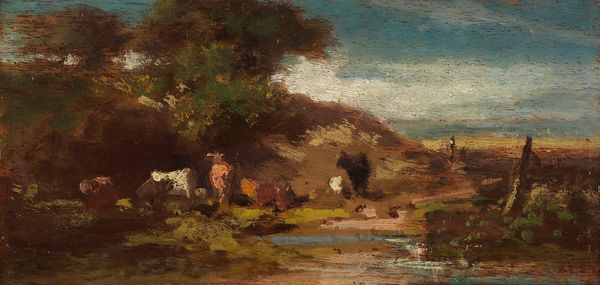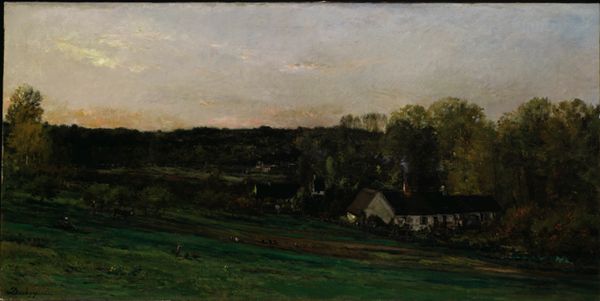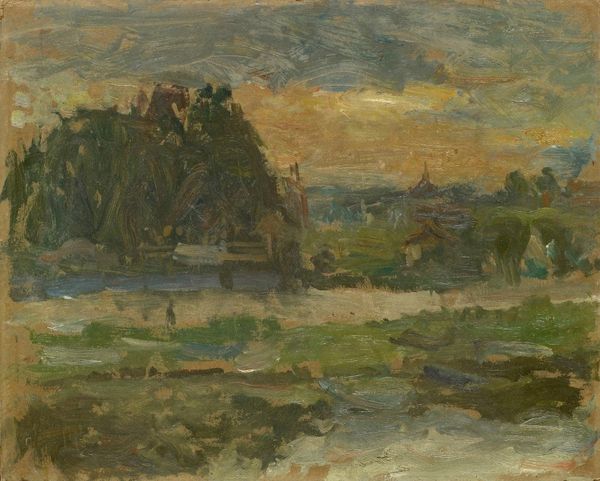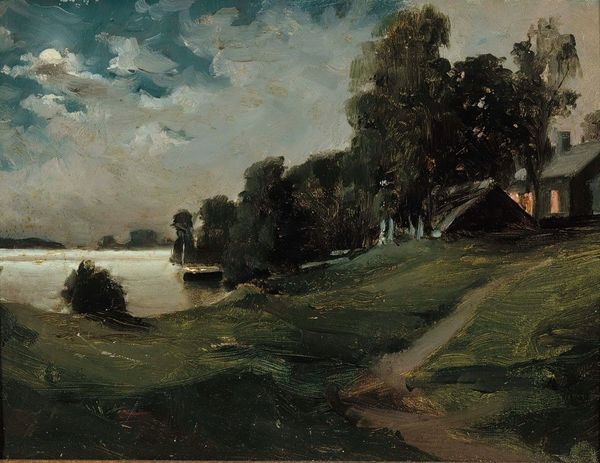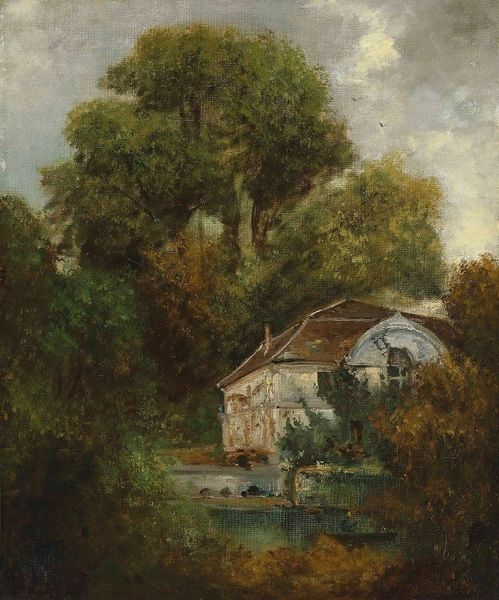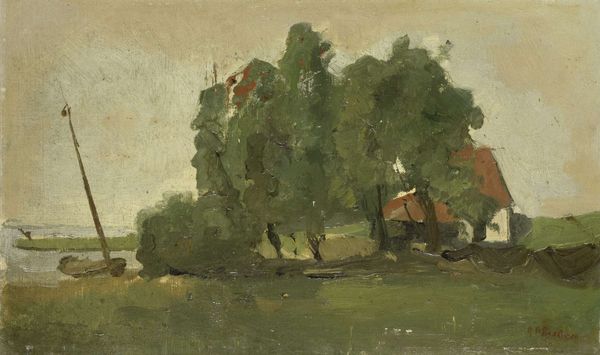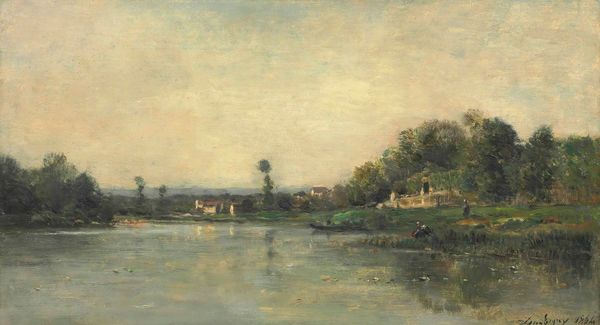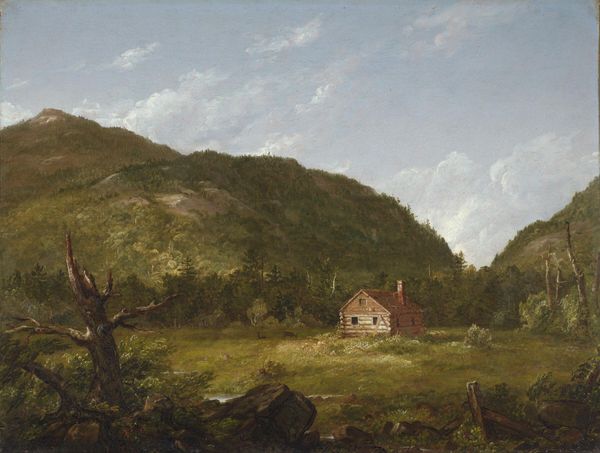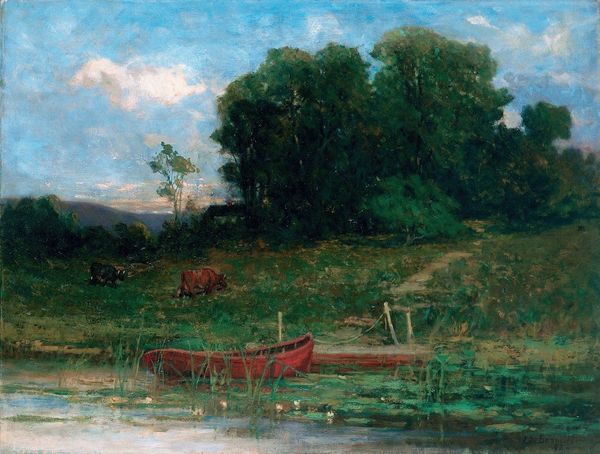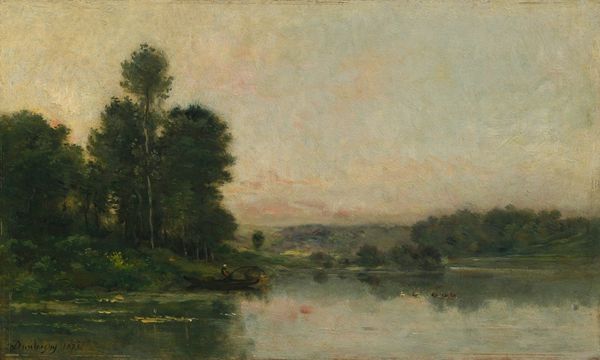
Copyright: Public Domain: Artvee
Editor: So, this is Edward Mitchell Bannister’s "Rocky Farm, Newport," painted in 1891 using oil paint in plein-air. The scene is really peaceful, but almost melancholic with the subdued colors and quiet setting. What strikes you when you look at it? Curator: Well, placing this painting within the context of Bannister's career and the late 19th century art world is crucial. Bannister, as an African American artist, faced significant institutional barriers. This work reflects the growing popularity of landscape painting at the time, connecting to broader social interests in nature and rural life but is unique given his specific cultural identity. What do you think about the relationship between landscape and social identity here? Editor: That’s something I hadn’t considered! So, was he making a conscious statement by painting landscapes when the art world might have expected something else? Curator: Precisely! He’s participating in a dialogue. He is staking a claim within a genre traditionally associated with white artists. Consider also the romantic qualities and brushwork - the rise of the plein-air movement as a response to urban industrial growth - the choice of subject may have been political, reflecting a yearning for a simpler, less oppressive existence, one open to interpretation by the viewer. How might this interpretation play in predominantly white museum spaces during Bannister’s time versus now? Editor: It’s almost like the quietness of the scene amplifies the message. Today, showcasing Bannister’s work challenges the art world’s historical exclusion. But in the late 1800s it could have challenged perceptions and sparked conversations, especially if shown in more inclusive galleries. Curator: Absolutely! Its public display would certainly question established power structures within the art community. It’s about more than just the picturesque; it’s about access, representation, and the ongoing negotiation of whose stories get told and where. Editor: This really reframes how I see Bannister and landscape paintings of the period. It's much more complex and relevant than I initially realized! Curator: Exactly, thinking of art as social commentary as much as visual beauty opens us to so many possibilities of learning.
Comments
No comments
Be the first to comment and join the conversation on the ultimate creative platform.
